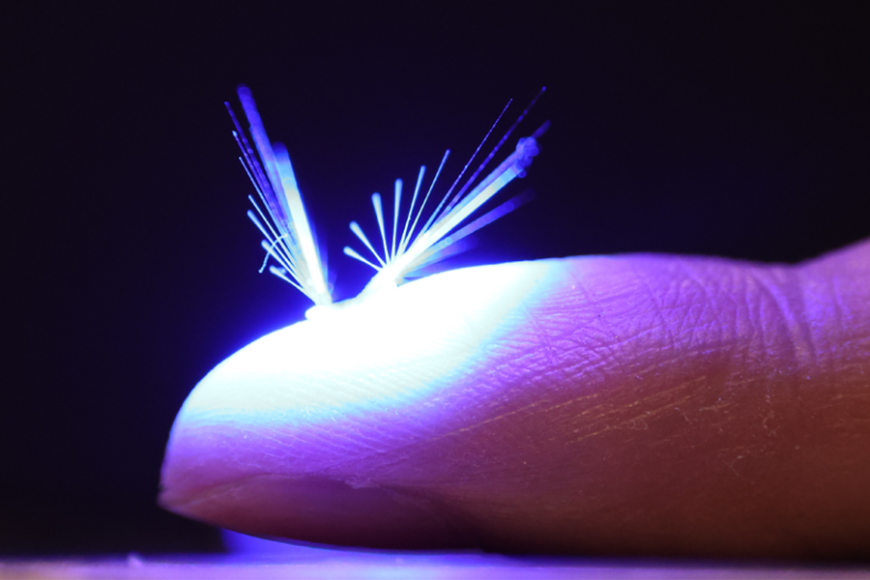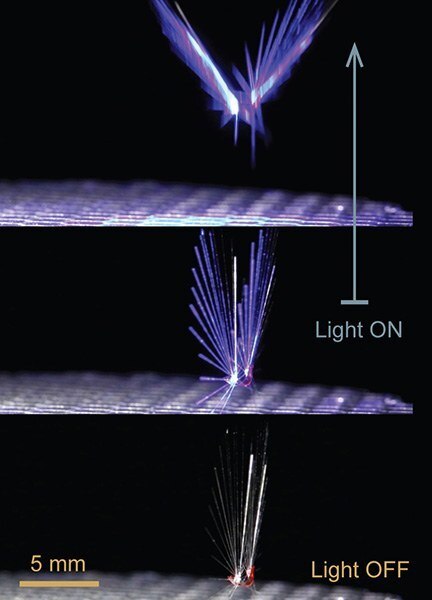
The team’s fairy-like robot relies on wind to travel to areas where crops require pollination. (Image Credit: Jianfeng Yang / Tampere University)
Tampere University researchers created tiny, flyable, fairy-like robots designed to help pollinate worldwide crops. The robots are comprised of stimuli-responsive polymers that serve as building materials in next-gen soft, wirelessly controlled robots. These materials also provided robots with walking, swimming, and jumping capabilities. Now, these stimuli-responsive polymers enabled robots to fly for the first time.
Additionally, the fairy bots can travel by wind since they are so porous and weigh just 1.2 milligrams. The bots can be controlled via light inputs. So a laser pointed at it forces it to undergo shape modifications, causing it to change direction or velocity as it travels in the wind. A light beam can control the takeoff and landing action.
“Superior to its natural counterparts, this artificial seed is equipped with a soft actuator. The actuator is made of light-responsive liquid crystalline elastomer, which induces opening or closing actions of the bristles upon visible light excitation,” explains Academy Research Fellow and group leader Hao Zeng.
The researchers plan to improve the material sensitivity, allowing the device to function in sunlight. They also want to up-scale the structure so it can be fitted with biochemical compounds and microelectronics like GPS and sensors.

During calm and dark weather, the robot structure remains still. After sufficient light exposure, the structure opens up so that it can fly in the wind. (Image Credit: Jianfeng Yang / Tampere University)
The robot could have important pollination applications. “It sounds like science fiction, but the proof-of-concept experiments included in our research show that the robot we have developed provides an important step towards realistic applications suitable for artificial pollination,” says Zeng.
Winds could disperse millions of artificial dandelion seeds carrying pollen, and light would move them toward trees requiring pollination. “This would have a huge impact on agriculture globally since the loss of pollinators due to global warming has become a serious threat to biodiversity and food production,” Zeng says.
The team needs to figure out how to precisely control the landing spot, reuse the devices, and make them biodegradable before proceeding. Materials scientists and those working with micro-robotics will need to collaborate with the team to find a solution.
Have a story tip? Message me at: http://twitter.com/Cabe_Atwell
